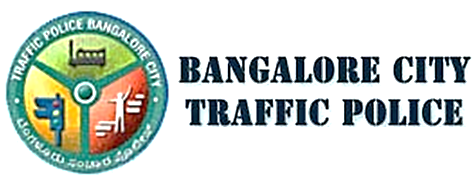HOT TOPICS
SPOTLIGHT AGENCIES
Ideas For Bangalore
Written By tsubba - 7 November, 2007
Bangalore Infrastructure Participation
ToI is starting a column called big ideas. This week it is Mohandas Pai, NS Mukunda and V sathyamurthy's ideas - basically diagnosis and prescriptions. Thougt it will worthwhile to discuss them ...
TV Mohandas Pai
The biggest challenge
for Bangalore is to put in place a holistic policy for the movement of
her citizens within the city. Bangalore today has a population of about
70 lakh, with 30 lakh vehicles
registered, including 5 lakh cars, 1.5 lakh autorickshaws, 22 lakh
two-wheelers and the rest being buses, lorries, three-wheelers and
assorted vehicles. Bangalore has the secondlargest number of private
vehicles in the country despite having the most profitable public
transport system in India. Every day about 850 vehicles are being
registered adding to the chaos on the roads.
Bangalore has
other challenges. Its populace is getting wealthier and more mobile.
Land policies in Bangalore are skewed and irrationally in favour of
individual independent housing instead of high-density housing leading
to an urban sprawl and longer commuting. It lacks a classical city
centre with large employment generation centres on the outskirts. It
lacks ring roads within the city, with the outer ring road being as
busy as the city roads, ill-designed for fast traffic. Bangalore is
long overdue for a rapid transit system which is only now being built,
delayed by unnecessary political opposition. Bangalore displays all the
characteristics of an overgrown small town.
Adding to the
misery, the flow of traffic is chaotic with a distinct lack of
discipline by the road users. This is compounded by an illequipped and
inadequate police force. There has been no substantial investment in
the police force over the last ten years.
There are no easy
solutions. We need a plan of action spread over the next 24 months,
monitored monthly by a high-level empowered group to solve them. We
also need this group to create and maintain a 25-year perspective plan
like Singapore so that investments are made on time to manage traffic
and build transportation systems.
“The city has expanded in a
very short time beyond the imagination of everybody,” was the constant
refrain that came to the rescue of those in charge of the city’s
development. But that was some five years ago! It’s time to move on and
ensure action on the ground.
Some actions for immediate consideration include:
Staggered timings
1. School and college timings to be between 8 am and 3:30 pm so that there’s no clash with office timings
2. Offices to start by 9 am so that traffic on account of government employees doesn’t mix with this movement.
Intelligent Traffic Management
1. Study traffic patterns to devise intelligent traffic management alternatives — to give right
of way to peak-hour traffic in a particular direction. This will ensure
that traffic flows are managed with differential times on traffic
lights
2. Synchronised traffic signals based on traffic flows
3. Availability of police personnel on all roads and intelligent deployment of the same based on traffic volumes
4. Enlist help from local communities/ industrial areas for traffic management
5. Strengthen enforcement of traffic rules 6. Installation of cameras across the city with a common command centre to ensure that offences are recorded and punished.
Development of roads
1. Complete
diversion roads already sanctioned for the diversion of HTV — don’t
allow HTV to plough through daily office/ school-going traffic
2. Completion of NICE road connecting Hosur Road to Tumkur Road; this will reduce congestion in South Bangalore by over 35%
3. Completion
of the peripheral road linking industrial areas to allow easy access to
and from the location (Tumkur Road; Bellary Road; Whitefield Industrial
Area; Hosur Road)
4. Creation of inner ring road over major drains with drop-off points at various centres
5. Broaden the main traffic corridors as done in Hyderabad to hasten traffic.
Central Business District
1. Traffic studies in CBD area to deploy some intelligent traffic management strategies
2. Allocate space for parking and build multi-level parking facilities at identified locations based on traffic volumes study
3. Run buses on a merry-go-round basis from parking lots around CBD to reduce vehicles on roads
Improved Public Transport Services
1. Improved quality and frequency of buses, increasing buses at peak hours when demand is the greatest
2. Integrate rapid transit system, railway system, bus system and public parking to reduce load on roads
3. Train BMTC drivers who today stop in the middle of the roads and create traffic blocks
4. Cleaner public buses with better seats, lesser engine noise inside, with power steering for better throughput.
Infrastructure development is not just about building roads. It is about building caring and cooperative communities which will come together to work on themes for the city’s improvement that matter to them. It is about building cultures. Take the example of Bogota, and one of the largest revolutions in urban development that was achieved through unleashing the collective power of the common man.
High-powered committee
The
government must authorise and empower a committee under the leadership
of the chief secretary to identify and track progress the above
decisions and of infrastructure development in the city
1. The committee must consist of representatives of government; citizens, industry bodies and NGOs and other stakeholders
2. This
committee must be given the responsibility to bring different
government and private agencies together for infrastructure
development/ improvement programmes
3. Set milestones and report progress on the project to the public every month; prioritise short- and long-term projects
There
is a need for citizens, the government and other stakeholders to work
together. No longer can we accept that this is the government’s problem
and all we need to do is criticise. All of us need to work together to
change what is happening. I am optimistic that the citizens of
Bangalore can bring about change in the city. We owe it to ourselves.
(The writer is member of the board, Infosys Technologies. These are his personal views and do not represent those of the organisation)
N S Mukunda, PRESIDENT, CITIZENS’ ACTION FORUM
Traffic experts must plan, traffic
police must enforce. Sadly in Bangalore, the traffic department comes
up with all the plans, but fails to implement them. Talk of lane
discipline, where are the lane markings? BTRAC can be a good plan to
manage traffic. How about installing cameras at signals and booking
violators? Reward law-abiders and punish defaulters. Change has to come
from the individuals. How many IT-BT and BPO companies have taken
action against erring cab drivers? Are schools punishing bus drivers
for reckless driving? Has the police suspended licences of any repeat
offender? The traffic flow is affected by the huge number of signals.
Synchronise them or introduce underpasses to make roads signal-free.
V Sathyamurthy, PRESIDENT, RESIDENTS WELFARE ASSOCIATION, SANJAYNAGAR
If there is a superlative term to
“chaotic”, that should be used for Bangalore traffic. Bangloreans do
not follow rules. The first and foremost measure should be to
discipline road users. Only sustained efforts on the part of traffic
police coupled with hefty fines will bring about a semblance of
discipline. Separate lanes for two wheelers and autorickshaws should be
enforced ruthlessly. Even the work on World Bank-funded projects is
shoddy. Such projects should be entrusted to professional companies.
COMMENTS

Arun - 9 November, 2007 - 04:32

one ways on richmond residency roads..
blrsri - 9 November, 2007 - 09:31

s_yajaman - 9 November, 2007 - 11:19


tsubba - 7 November, 2007 - 16:17
PRAJA.IN COMMENT GUIDELINES
Posting Guidelines apply for comments as well. No foul language, hate mongering or personal attacks. If criticizing third person or an authority, you must be fact based, as constructive as possible, and use gentle words. Avoid going off-topic no matter how nice your comment is. Moderators reserve the right to either edit or simply delete comments that don't meet these guidelines. If you are nice enough to realize you violated the guidelines, please save Moderators some time by editing and fixing yourself. Thanks!





